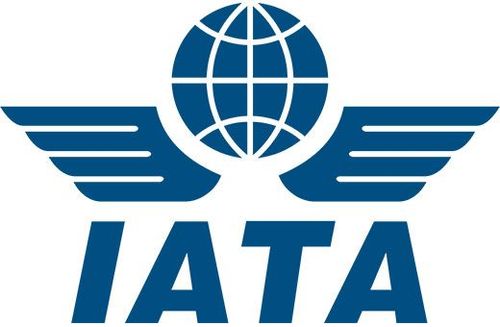Where travel agents earn, learn and save!
News / Air passenger numbers to recover in 2024
IATA expects overall traveler numbers to reach 4.0 billion in 2024

The International Air Transport Association (IATA) expects overall traveler numbers to reach 4.0 billion in 2024 (counting multi-sector connecting trips as one passenger), exceeding pre-COVID-19 levels (103% of the 2019 total).
Expectations for the shape of the near-term recovery have shifted slightly, reflecting the evolution of government-imposed travel restrictions in some markets. The overall picture presented in the latest update to IATA’s long-term forecast, however, is unchanged from what was expected in November, prior to the Omicron variant.
The February update to the long-term forecast includes the following highlights:
- In 2021, overall traveler numbers were 47% of 2019 levels. This is expected to improve to 83% in 2022, 94% in 2023, 103% in 2024 and 111% in 2025
- In 2021, international traveler numbers were 27% of 2019 levels. This is expected to improve to 69% in 2022, 82% in 2023, 92% in 2024 and 101% in 2025
This is a slightly more optimistic near-term international recovery scenario compared to November 2021, based on the progressive relaxation or elimination of travel restrictions in many markets. This has seen improvements in the major North Atlantic and intra-European markets, strengthening the baseline for recovery. Asia-Pacific is expected to continue to lag the recovery with the region’s largest market, China, not showing any signs of relaxing its severe border measures in the near future.
- In 2021, domestic traveler numbers were 61% of 2019 levels. This is expected to improve to 93% in 2022, 103% in 2023, 111% in 2024 and 118% in 2025
The outlook for the evolution of domestic traveler numbers is slightly more pessimistic than in November. While the US and Russian domestic markets have recovered, the same is not true for the other major domestic markets of China, Canada, Japan and Australia.
IATA reiterates its call for:
- The removal of all travel barriers (including quarantine and testing) for those fully vaccinated with a WHO-approved vaccine
- Pre-departure antigen testing to enable quarantine-free travel for non-vaccinated visitors
- Removing all travel bans, and
- Accelerating the easing of travel restrictions in recognition that visitors pose no greater risk for COVID-19 spread than already exists in the general population
Regional Variations
Not all markets or market sectors are recovering at the same pace.
Asia-Pacific: The slow removal of international travel restrictions, and the likelihood of renewed domestic restrictions during COVID outbreaks, mean that traffic to/from/within Asia Pacific will only reach 68% of 2019 levels in 2022, the weakest outcome of the main regions. 2019 levels should be recovered in 2025 (109%) due to a slow recovery on international traffic in the region.
Europe: In the next few years, the intra-Europe market is expected to benefit from passenger preferences for short-haul travel as confidence rebuilds. This will be facilitated by increasingly harmonized and restriction-free movement within the EU. Total passenger numbers to/from/within Europe are expected to reach 86% of 2019 values in 2022, before making a full recovery in 2024 (105%).
North America: After a resilient 2021, traffic to/from/within North America will continue to perform strongly in 2022 as the US domestic market returns to pre-crisis trends, and with ongoing improvements in international travel. In 2022, passenger numbers will reach 94% of 2019 levels, and full recovery is expected in 2023 (102%), ahead of other regions.
Africa: Africa’s passenger traffic prospects are somewhat weaker in the near-term, due to slow progress in vaccinating the population, and the impact of the crisis on developing economies. Passenger numbers to/from/within Africa will recover more gradually than in other regions, reaching 76% of 2019 levels in 2022, surpassing pre-crisis levels only in 2025 (101%).
Middle East: With limited short-haul markets, the Middle East focus on long-haul connectivity through its hubs is expected to result in slower recovery. Passenger numbers to/from/within the Middle East are expected to reach 81% of 2019 levels in 2022, 98% in 2024 and 105% in 2025.
Latin America: Traffic to/from/within Latin America has been relatively resilient during the pandemic and is forecast to see a strong 2022, with limited travel restrictions and dynamic passenger flows within the region and to/from North America. 2019 passenger numbers are forecast to be surpassed in 2023 for Central America (102%), followed by South America in 2024 (103%) and the Caribbean in 2025 (101%).
PASSENGER NUMBERS, SHARE OF 2019 | 2021 | 2022 | 2023 | 2024 | 2025 |
|---|---|---|---|---|---|
| Industry-wide | 47% | 83% | 94% | 103% | 111% |
| International | 27% | 69% | 82% | 92% | 101% |
| Domestic | 61% | 93% | 103% | 111% | 118% |
| Asia Pacific | 40% | 68% | 84% | 97% | 109% |
| Europe | 40% | 86% | 96% | 105% | 111% |
| North America | 56% | 94% | 102% | 107% | 112% |
| Africa | 46% | 76% | 85% | 93% | 101% |
| Middle East | 42% | 81% | 90% | 98% | 105% |
| South America | 51% | 88% | 97% | 103% | 108% |
| Central America | 72% | 96% | 102% | 109% | 115% |
| Caribbean | 44% | 72% | 82% | 92% | 101% |
Source:IATA/Tourism Economics Air Passenger Forecast, March 2022
Russia-Ukraine Conflict
The forecast does not calculate the impact of the Russia-Ukraine conflict. In general, air transport is resilient against shocks and this conflict is unlikely to impact the long-term growth of air transport. It is too early to estimate what the near-term consequences will be for aviation, but it is clear that there are downside risks, in particular in markets with exposure to the conflict.
Sensitivity factors will include the geographic extent, severity, and time-period for sanctions and/or airspace closures. These impacts would be felt most severely in Russia, Ukraine and neighboring areas. Pre-COVID-19, Russia was the 11th largest market for air transport services in terms of passenger numbers, including its large domestic market. Ukraine ranked 48.
The impact on airline costs as a result of fluctuations in energy prices or rerouting to avoid Russian airspace could have broader implications. Consumer confidence and economic activity are likely to be impacted even outside of Eastern Europe.











